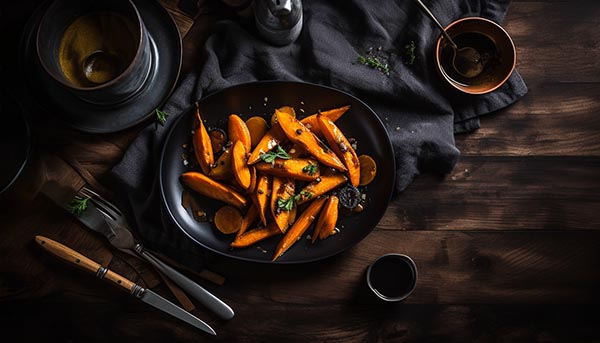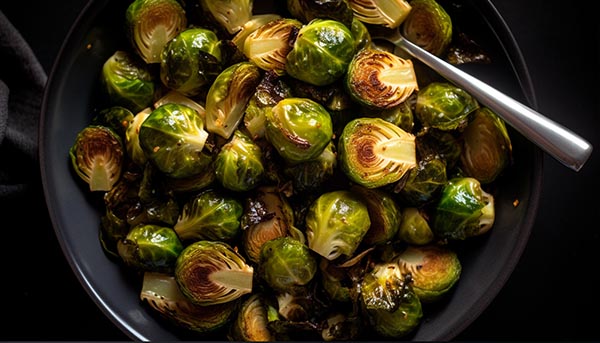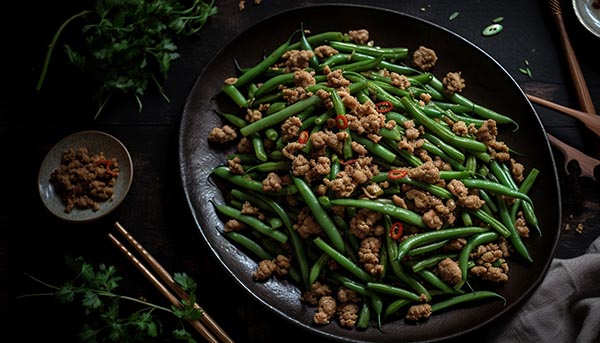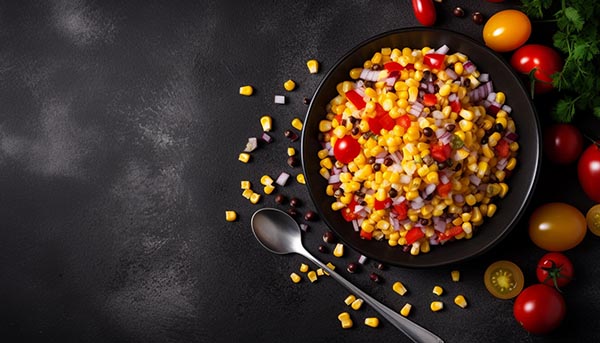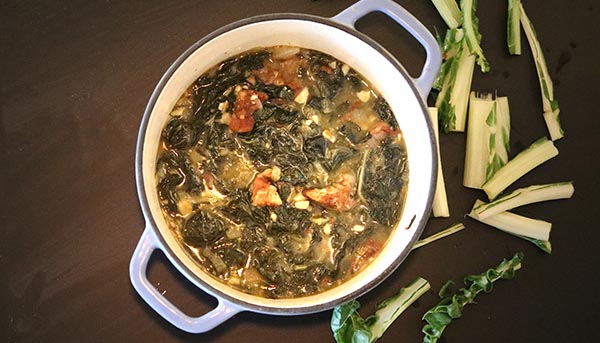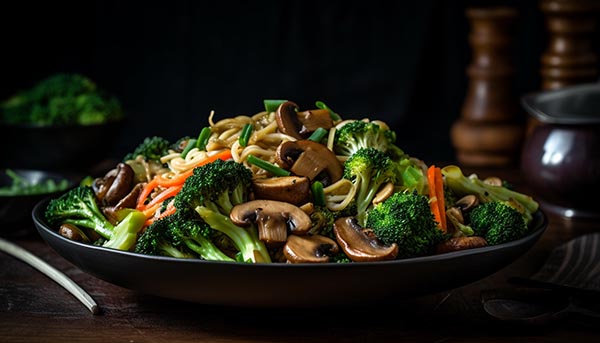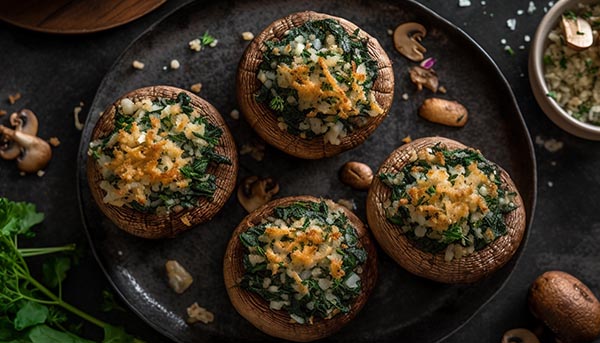Recently I went on a visit to Canada and discovered an old friend was ingesting some powder because she hated eating vegetables. That led me down a rabbit hole. Discovering why some people hate vegetables. Of course kids hate vegetables and even adults prefer meat and carbs. I mean why else would all the junk food restaurants be so successful right?
Vegetables are nature’s bounty, packed with essential nutrients and health benefits. However, not everyone seems to appreciate the vibrant array of flavors they offer. The aversion towards vegetables, particularly bitterness, can be attributed to various factors, including genetic predisposition. According to this Medium article about 20% of people have a genetic aversion to vegetables. It’s not their fault.
Understanding the Genetics Behind Vegetable Aversion:
Several studies have indicated that genetics play a role in determining our taste preferences. This study found children who reject fruits and vegetables do so due to a genetic predisposition. Bitterness sensitivity is influenced by genes, specifically the TAS2R gene family, which codes for bitter taste receptors on the tongue. Some individuals have heightened sensitivity to bitter tastes due to specific variations in these genes. For them, the bitterness in certain vegetables, like broccoli or brussels sprouts, can be overwhelming, leading to a strong dislike for these foods. This study of college students found there two factors that can influence our liking for vegetables bitterness of propylthiouracil (PROP) measured with the taste receptor gene, TAS2R38 and the number of fungiform papillae on the anterior tongue. The study suggests that genetic variation in taste, measured by multiple phenotypes or TAS2R38 genotype, can explain differences in overall consumption of vegetables, but this was not restricted to vegetables that are predominantly bitter.
Other Factors Contributing to Vegetable Aversion:
Early Childhood Experiences: Children who are exposed to vegetables early in life are more likely to develop a liking for them. Aversion might result from negative experiences during childhood, such as forceful feeding or poorly cooked vegetables. Young children especially do not like mushy soggy vegetables. They like crunchy vegetables like carrots or lightly steamed broccoli that are still crunchy because their teeth are growing and need stimulation to grow stronger. Just like that puppy that bites on everything.
Texture and Smell: Texture and smell heavily influence taste perception. Some people might dislike certain vegetables due to their textures or odors, which can overpower their flavor. Many people overcook their vegetables and others just don’t know to pair it with oil and salt to make them tasty. Having vegetables with oil makes the nutrients more bioavailable. For example, drizzling broccoli or Bok Choy with some toasted sesame oil makes the vegetable taste much better and cut down the bitterness. Children love dipping carrots on ranch dressing because it adds to the taste. Salt, Soy sauce or Tamari sauce is also need vegetables.
Cultural and Social Factors: Dietary habits are often shaped by cultural and social norms. People raised in households with limited vegetable consumption may develop an aversion to them. For example people in the North East of the United States are meat and potato people while those in the tropics eat a wide variety of vegetables due to the wide availability of them and the high cost of meat. Similarly Tibetans eat little vegetables despite now living in the cities of America simply because they did not have access to vegetables in Himalayas.
Limited Culinary Exposure: Lack of exposure to diverse vegetable preparations may lead to an underappreciation of their flavors. My mother exposed me to a wide variety of vegetables as a young child some of them I hated. But as an adult I have to come appreciate those vegetables like bitter melon, Okra and Collard greens. One study from Korean found people who ate a more diverse range of vegetables had a longer lifespan. But more than exposure one must learn how to cook vegetables. For years I use to overcook broccoli. These days I steam them for exactly 9 minutes and drizzle them with toasted sesame oil and tamari sauce. The taste is unbelievable. I have also learnt how to make Chinese style bitter melon and how to roast bell pepper in the toaster oven.
Poor quality of industrial vegetables: In this age of industrial farms where appearance, price and size seem to matter instead of taste, people may have been put off by the insipid taste of many vegetables. Go to a tropical country and you will find the taste of almost all vegetables is far better. Try to find organic vegetables grown locally or in season and you will find the vegetables taste far better.
Bitterness and Toxicity: Humans have evolved to detect bitterness as a defense mechanism against potentially toxic substances. Hence, an inherent aversion to bitter tastes can be seen as a survival advantage.
High cost of vegetables: Many people in these times of high inflation cannot afford vegetables. Meat and canned fish represent better value, is easier to cook and more satiating. Fresh vegetables also perish fast. But there are frozen (Spinach/corn/carrots) and canned vegetables options available that can be reasonable in cost. Spinach for example is more nutrient dense when used from frozen form. Tomatoes too can be tastier when they are plucked ripe at source and then canned immediately instead of being picked half raw to give them enough time to reach the supermarket without spoiling.
Overcoming vegetable aversion
Learning to love making and eating vegetables, even if you currently dislike them, is entirely possible with some patience, experimentation, and an open mind. Here are some tips to help you develop a newfound appreciation for vegetables:
- Start Slowly: Begin by introducing small portions of vegetables in your meals. Gradually increase the amount over time to allow your taste buds to adapt to the new flavors.
- Experiment with Preparation Methods: Try various cooking techniques like roasting, grilling, steaming, sautéing, or even raw. Different methods can bring out different flavors and textures in vegetables.
- Pair Vegetables with Foods You Enjoy: Incorporate vegetables into dishes that you already love. For example, add veggies to your favorite pasta sauce, stir-fry, or pizza toppings.
- Explore Different Vegetables: Don’t limit yourself to the vegetables you’re familiar with. Venture into trying new and exotic ones, as they may offer unique tastes and textures.
- Add Herbs and Spices: Use herbs and spices to enhance the flavors of vegetables. Fresh herbs like basil, thyme, and cilantro, or spices like garlic, ginger, and cumin, can make a significant difference.
- Mix and Match: Combine different vegetables together to create colorful and visually appealing dishes. Variety in colors and textures can make the experience more enjoyable.
- Dress Up Salads: Experiment with delicious dressings and toppings to make salads more enticing. Include fruits, nuts, seeds, and cheeses to add variety and interest.
- Incorporate Vegetables into Smoothies: Sneak in vegetables like spinach, kale, or carrots into fruit smoothies to mask their flavors while still reaping their health benefits.
- Seek Inspirations from Cooking Shows and Books: Watch cooking shows or read cookbooks that focus on vegetable-based dishes. This can provide you with creative ideas and techniques to prepare vegetables in exciting ways.
- Share Meals with Veggie Lovers: Eat with friends or family members who enjoy vegetables. Their enthusiasm might be infectious and positively influence your perspective.
- Be Patient with Yourself: It takes time to develop new tastes and preferences. Don’t be discouraged if you don’t immediately love certain vegetables. Keep trying and remain open to the experience.
- Celebrate Your Progress: Acknowledge your efforts and any progress you make in incorporating more vegetables into your diet. Small victories can boost your motivation to continue exploring new options.
10 Palatable Vegetable Recipes for the Veggie Haters:
Caramelized Carrots and Sweet Potatoes: Roast carrots and sweet potatoes with a drizzle of honey, cinnamon, and a pinch of salt to bring out their natural sweetness.
Cheesy Cauliflower Mash: Steam cauliflower and mash it with low-fat cheese, garlic, and a hint of nutmeg for a creamy, flavorful alternative to traditional mashed potatoes.
Honey-Glazed Brussels Sprouts: Toss Brussels sprouts with olive oil, honey, and balsamic vinegar, then roast until caramelized for a delightful sweet and tangy flavor.
Zucchini Fritters: Grate zucchini and mix with breadcrumbs, grated cheese, and seasonings. Fry into crispy fritters for an enjoyable texture and taste.
Sautéed Garlic Green Beans and pork: Fast, piquant weeknight meal, ground pork and green beans are stir-fried with plenty of ginger, garlic and chilies, and seasoned with soy sauce and coriander seed/
Sweet Corn and Pepper Salsa: Mix corn kernels, colorful bell peppers, onions, lime juice, and a touch of honey for a vibrant and appetizing salsa.
Southern collard greens - This video uses Turkey but the taste is better with ground pork and even better with Cinnamon infused Pork Belly. Eat it with some white rice. You cook it for long but the nutrients remain in the juice.
Vegetable stir fry: a mixture of colorful vegetables sautéed in a sweet and savory sauce that makes for a simple weeknight meal! Less than 30 minutes to make from start to finish! Use whatever vegetables you have if you wish.
Steamed Broccoli: Add cold water to steamer pan, add broccoli, cover and steam exactly 9 minutes, remove broccoli, add toasted sesame oil and tamari sauce to taste, cover with a lid, shake until well mixed and sprinkle with sesame seeds and serve.
Creamy Spinach and Cheese Stuffed Mushrooms: Stuff mushrooms with a mixture of cream cheese, spinach, garlic, and breadcrumbs, then bake until tender and cheesy.
Conclusion:
While genetic factors and early experiences can contribute to vegetable aversion, there are numerous ways to make vegetables palatable for those who dislike them. By experimenting with different cooking techniques and flavor combinations, we can transform vegetables into delicious and nutritious meals that even the most ardent veggie haters may come to enjoy. Remember, a diverse and balanced diet is essential for overall health, so let’s embrace the vegetable journey with an open mind and a willing palate. Happy cooking!


